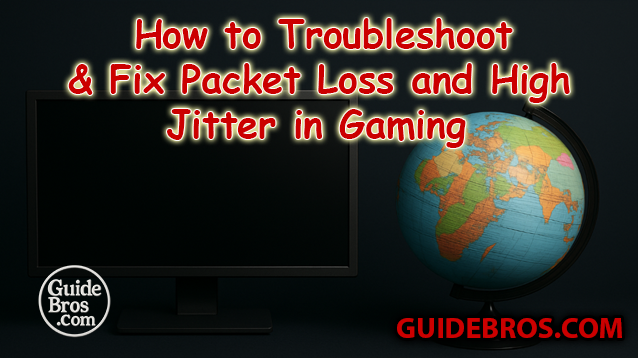🎮 How to Troubleshoot & Fix Packet Loss and High Jitter in Gaming
By Paquito Jr Conde | September 4, 2025

If you’ve been frustrated with lag spikes, rubberbanding, or random stuttering while playing your favorite games, you’re not alone. These problems are often caused by packet loss and jitter. This guide will walk you through simple fixes and advanced solutions to help you enjoy smoother, more stable gameplay. 🚀
🎮 How to Troubleshoot & Fix Packet Loss and High Jitter in Gaming
🔍 Step 1: Understand the Problem
Packet loss: Happens when data packets from your device don’t reach the game server. This can cause rubberbanding, lag spikes, or even disconnections.
Jitter: Refers to inconsistent delays between packets. This leads to stuttering or unstable latency.
Both are signs of network instability.
🧪 Step 2: Test Your Network
- Ping test: Open Command Prompt (Windows: cmd) or Terminal (Mac/Linux) and run:
ping google.com -n 50orping 8.8.8.8. Check packet loss % and time variance. - Traceroute test: Run
tracert google.comon Windows ortraceroute google.comon Mac/Linux to see where the connection slows or drops. - Online tools: Use PingPlotter (visual graph of jitter & packet loss) and Speedtest.net or Fast.com (to check bandwidth & stability).
⚙️ Step 3: Fixes at Home (Your Setup)
- Use Wired Connection: Ethernet is always better than Wi-Fi to reduce jitter and interference.
- Restart Devices: Power cycle your router & modem (turn off for 30s, then restart). Also reboot your PC/console.
- Optimize Router Placement (if using Wi-Fi): Keep it away from walls, microwaves, and cordless phones. Prefer 5GHz Wi-Fi instead of 2.4GHz.
- Close Background Apps: Stop downloads, streaming, and updates while gaming.
- Change DNS Servers: Use Google DNS (
8.8.8.8 / 8.8.4.4) or Cloudflare DNS (1.1.1.1).
🔧 Step 4: Router & Network Settings
- Enable QoS (Quality of Service): Prioritize gaming traffic on your router.
- Disable Bandwidth-Hogging Features: Turn off Smart Connect, Bandwidth Control, or heavy parental controls.
- Update Router Firmware: Fixes bugs and improves stability.
- Reduce Connected Devices: Too many users can cause high jitter. Limit connections while gaming.
🌐 Step 5: ISP & External Factors
- Check Your Internet Plan: Gaming needs low latency more than high speed. Upgrade if speeds are too low.
- Contact Your ISP: Ask if packet loss or jitter is on their end. Request a line test or check for congestion.
- Use a Gaming VPN (Optional): Can reduce jitter if your ISP routes poorly to the game server.
- Play on Closer Servers: Always select the lowest-ping server in game settings.
🛠️ Step 6: PC & Console Tweaks
- Update your network drivers (PC).
- Disable background processes like Steam downloads or cloud sync.
- Lower in-game graphics settings to reduce CPU load (note: this won’t fix packet loss but can help overall smoothness).
🚨 Advanced Fixes (If Issues Persist)
- Replace old Ethernet cables (use Cat6 or better).
- Upgrade outdated modem/router (especially ISP-issued ones).
- If on Wi-Fi, consider a mesh Wi-Fi system.
- Use PingPlotter logs as proof to show your ISP.
✅ Quick Summary
- Wired is always better than wireless.
- Restart & reset your devices regularly.
- Test your connection using ping and traceroute.
- Optimize your router with QoS, firmware updates, and DNS changes.
- Check with your ISP and choose closer servers for better stability.